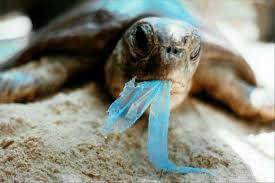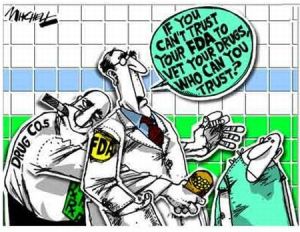Do you think infants should sleep with their parents?
The following letter appeared in the November issue of The Archives of Adolescent and Pediatric Medicine, which is a publication of the American Medical Association. I have included the entire text, as it contains lots of interesting information and many good references.
“Don’t sleep with your baby or put the baby down to sleep in an adult bed.” Ann Brown, chair of the US Consumer Product Safety Commission (CPSC). Voiced this statement in the 9/30/99, New York Times through a CPSC press release.
The release previewed data from an October 1999 Archives of Pediatrics and Adolescent Medicine study entitled “Review of Hazards Associated with Children Placed in Adult Beds.” The news flew over the associated Press wires, and emotionally charged commentaries were printed in newspapers and magazines nationwide, a clear indication of the public interest on this issue. Numerous websites espouse the benefits of co-sleeping, also reflecting current interest in the family bed concept.
Historically, co-sleeping in this country was the normal practice.
Today, the practice of co-sleeping is standard for most non-Western cultures and is common in the US, yet it’s probable that many pediatricians in this country, like the CPSC chairperson, counsel new parents to sleep separately from their infants. This is one of many areas where physicians may counsel families based on few, or anecdotal data, in contrast to the recent trend toward evidence-based medicine.
What are the potential risks and benefits of co-sleeping?
Are there enough data to support encouraging or discouraging this common practice? This commentary will review the relevant literature on this subject, enabling pediatricians to more knowledgeably counsel families about co-sleeping.
And because professionals in the field of health often receive information that isn’t shared with the general public, unfortunately, I like to do what I think is best, after all, who cares more for their babies then the parents?
Potential Benefits of Co-sleeping
From a biological perspective, co-sleeping is a natural extension of infant care practice. Among mammals, human infants are born the most neurologically immature, needing close human contact for basic survival. Mammals need close physical contact for more than just nutritional needs. Harlow’s work demonstrated that newborn monkeys separated from their mothers spent significantly more time in contact with a cloth surrogate mother than a wire one, even if th wire surrogate provided all of the infant’s nutrition.
Recent work by Mosko et al has shown that the sleep architecture of infants who co-sleep is qualitatively different. Healthy mother-infant pairs were studied in the sleep laboratory sleeping either alone or together. While bed sharing, infants had significantly longer total sleep time, a greater duration and percentage of stage – half sleep, shorter duration and lower percentage of stage – three-quarters sleep (quiet sleep).
The authors postulate that if sudden infant death syndrome (SIDS) is caused by an arousal deficiency, then less time spent in quiet sleep through co-sleeping may be protective.
This same group observed patterns of breast-feeding in the sleep laboratory between those who routinely co-slept and those who did not. For infants who routinely bed shared, the number and duration of breast-feeding episodes were significantly greater on the bed-sharing night. The authors concluded that bed sharing promotes breast-feeding.
There are many professionals and parents who strongly advocate co-sleeping as the optimal way to raise a child. Sears, author of Nighttime Parenting, advocates “attachment parenting,” a concept that includes the possibility of various sleeping arrangements, depending on the needs of the family.
Co-sleeping and SIDS
 According to the Centers for Disease Control and Prevention’s (Atlanta, Ga) surveillance data between 1980 and 1994, SIDS was the leading cause of death among infants aged 28 to 364 days, accounting for 33% of all post-neonatal deaths. The annual rate of decline of SIDS deaths in the U.S. was more than 3 times faster from 1990 to 1994 than from 1083 to 1989; the latter dates coincide with national efforts placed on educating families about the risks of prone sleeping.
According to the Centers for Disease Control and Prevention’s (Atlanta, Ga) surveillance data between 1980 and 1994, SIDS was the leading cause of death among infants aged 28 to 364 days, accounting for 33% of all post-neonatal deaths. The annual rate of decline of SIDS deaths in the U.S. was more than 3 times faster from 1990 to 1994 than from 1083 to 1989; the latter dates coincide with national efforts placed on educating families about the risks of prone sleeping.
Does co-sleeping increase the risk of SIDS? Several studies have attempted to answer this question. Results from the 3 most recent and comprehensive investigations. These studies drew similar conclusions; there is no detectable increase risk of SIDS from co-sleeping unless the mother smokes. Recall bias and residual confounding many have disforested results from these studies. However, point estimates for the relative risk of SIDS while co-sleeping (and smoke free) were remarkably similar and close to unity in all 3 studies.
Co-sleeping and Suffocation
Another major concern involving the practice of co-sleeping is the risk of
suffocation, a fear dating back to biblical times. (In 1 Kings, chapter 3, one woman accused another of having “overlaid” her newborn.)
Drago and Dannenberg reviewed 2178 case summaries from the CPSC Death Certificate Files from 1980 to 1997, for infants younger than 13 months, whose deaths were attributed to mechanical suffocation.
The leading pattern (40% of cases) of suffocation was wedging (infant is trapped between 2 products or parts of a product). More than half of the wedgings involved a bed; 22% occurred in a crib. Further investigation revealed that many of these cribs didn’t meet current federal crib standards. The second leading cause (24% of cases) of suffocation death was due to nasal obstruction from bedding, pillows, and plastic bags. The third cause (8% of cases) was from infants being overlain by another person.
Another article, published in Archives of Pediatrics and Adolescent Medicine, reviewed the CPSC’s databases from 1990 to 1997 for deaths of children aged younger than 2 years who were placed in adult beds, day beds, and waterbeds. There were 515 deaths in children younger than 2 years who were placed to sleep in an adult bed, with 394 of these deaths attributed to entrapment in the bed.
A total of 121 deaths were attributed to overlying by a parent, sibling, or other adult. During the same period, there were 17 deaths of children older than 2 years sleeping in adult beds, 8 of which occurred in severely disabled children. Although the authors did not investigate deaths of children placed in cribs, they did cite another CPSC study from 1989 t0 1991, which found an average of 50 accidental deaths per year in cribs, compared with an average of 64 deaths per day in adult beds.
The authors maintain that mothers should be encouraged to breast-feed, but recommend they be “alerted to the hazard of overlying” if the mother and infant fall asleep together after feeding, which is likely to be a common occurrence.
Unfortunately, the CPSC data only represent a case series and aren’t denominator-based, making it impossible to ascertain the relative risk of death for infants who co-sleep. There is also no possibility of ascertaining the accuracy of the information derived from the databases. Last, how many infants were sleeping with parents impaired by alcohol or other drugs? How many were sleeping with a sibling vs a parent (another potential risk factor)?
To put the risk of suffocation into perspective, the post-neonatal injury death rate per 100,000 live births of white infants in 1994 was 22, of which nearly a third were due to suffocation. This is less than one tenth of the mortality rate from SIDS for the same cohort.
The American Academy of Pediatrics has issued a statement on this topic. Although co-sleeping is not encouraged, it’s not discouraged either, assuming that the sleep environment is otherwise safe, the infant is supine, and co-sleepers do not smoke or use other drugs that impair arousal.
Recommendations
 To my knowledge, to date, the literature offers insufficient data to recommend or discourage babies and parents from co-sleeping. Meanwhile, many parents and healthcare professionals believe that co-sleeping is the best way to raise a baby physiologically, psychologically, and emotionally.
To my knowledge, to date, the literature offers insufficient data to recommend or discourage babies and parents from co-sleeping. Meanwhile, many parents and healthcare professionals believe that co-sleeping is the best way to raise a baby physiologically, psychologically, and emotionally.
Therefore, are pediatricians justified in condemning the family bed, making parents feel guilty about harming their baby? Clearly, pediatricians must counsel families about the dangerous of smoking, drinking alcohol, or taking drugs that impair arousal, and the potential for infant suffocation in beds, cribs, and bedding. However, until there is more compelling evidence, the decision to co-sleep, like many other child rearing practices, should be left to the family.
Catherine Kelley, MD, University Hospital, Department of Pediatrics. I couldn’t agree more with Dr. Kelley that physicians should keep their noses out of the business of parents’ person child rearing practices, particularly when there is insufficient evidence to back up their claims. The co-sleeping arrangement may not be suitable for all families, but parents should not be scared away from it unnecessarily.
What doctor’s should do however, is discuss the issue or provide information to parents concerning how to keep such a sleeping arrangement as safe as possible. Some of these recommendations would be as follows:
* The safest arrangement, according to William Sears, MD, is for the infant to sleep between the breast-feeding mother and the edge of the bed, with an adequate barrier to prevent the baby from falling off. This removes any risk of suffocation from the father. Many experts have noted that there is a connection or awareness of the baby between mother and child that does not exist with the father. I would stress that this in no way means the father loves the baby any less. The mother’s special bond is simply a protective biological mechanism.
* If the baby is to sleep between mother and father in the middle of the bed, extra care and precautions should be taken, particularly concerning the father.
* Co-sleeping mothers particularly should try to breast-feed their babies, as that special biological bond discussed previously will be much more acute and in tune with the baby.
* Do not sleep with the baby if you have had any alcoholic beverages.
* Do not sleep with the baby if you’re very overtired or fatigued enough to impair your ability to awaken during the night.
If the father has gone out and had a few alcoholic drinks or is overtired for whatever reason, it would be much safer for him to sleep on the couch, than to sleep next to a newborn baby.
Most of the risks associated with co-sleeping tend to decline rapidly as the baby grows, but care should still be exercised with children of all ages.
Hope this is information that some of you can use today, or may have family and friends that should read this article. Remember, that knowing is the first step in making wise decisions for you and those you love. OK?
Dr. Rhonda – helping you to –
Plan for Tomorrow’s Good Health – TODAY
Website: www.drhenry.com
Email: contact@drhenry.com
Office: 702-269-8120



























 Trans fats – great for shelf life and for boiling French fries but horrible for Heart Health– will be banned by the Food and Drug Administration – Finally!
Trans fats – great for shelf life and for boiling French fries but horrible for Heart Health– will be banned by the Food and Drug Administration – Finally!







You must be logged in to post a comment.